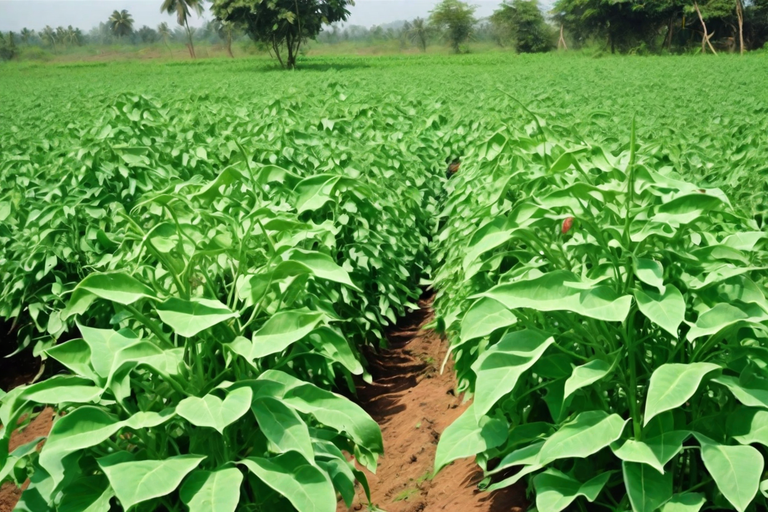Cowpea (Vigna unguiculata), known by various names such as black-eyed pea, southern pea, or Lobia in India, is a versatile legume crop that plays a crucial role in Indian agriculture. It is valued for its high nutritional content, adaptability to different agro-climatic zones, and contribution to food security.
In this article, we will explore the world of cowpea farming in India, from its varieties and cultivation practices to its significance in the Indian agricultural landscape. To begin this journey, let’s delve into the multifaceted world of cowpea farming.
Varieties of Cowpea in India:
India boasts a rich diversity of cowpea varieties, which can be broadly categorised as follows:
- Local Varieties: These are traditional cowpea varieties that have adapted to specific regions over time. They are often well-suited to local environmental conditions and are still cultivated by many farmers.
- Improved Varieties: Developed through breeding programs, improved cowpea varieties offer higher yields and better disease resistance. Some popular improved varieties include Pusa Komal, Pusa Barsati, and Pusa Sem 2.
- Bush and Climbing Varieties: Cowpea has bush and climbing varieties. Bush varieties are compact and suitable for smaller plots while climbing varieties require support and are often preferred for larger farms.
Climatic Conditions for Cowpea Farming
Cowpea, a highly adaptable crop, is found in diverse agro-climatic zones throughout India. This versatility extends to its suitability for the Kharif (rainy season) and Rabi (post-monsoon) cultivation. Its resilience in warm, semi-arid regions, notably in states such as Andhra Pradesh, Tamil Nadu, Karnataka, and Maharashtra, underscores its significance in Indian agriculture.
Land Preparation for Cowpea Cultivation
Successful cowpea farming begins with proper land preparation. For optimal land preparation, you must prepare the land by plowing and harrowing to obtain a fine and weed-free seedbed.
Soil Type: Cowpea is not very demanding regarding soil type. However, it performs best in well-drained, sandy loam to loamy soils with a pH range of 6.0 to 6.5. For instance, using a tractor like the Swaraj 735xt can facilitate the preparation of such soil conditions for successful cowpea cultivation.
Sowing and Spacing
Cowpea can be sown directly in the field during the Kharif and Rabi seasons. Sow the seeds at a depth of 3-4 cm with inter-row spacing of 30-45 cm and intra-row spacing of 10-15 cm.
Irrigation Management
Adequate moisture is crucial for cowpea cultivation. During the initial stage, frequent irrigation may be necessary, but as the crop matures, the frequency should decrease to prevent waterlogging.
Nutrient Management
- Cowpea responds well to both organic and inorganic fertilizers. Before sowing, it’s beneficial to apply well-rotted farmyard manure or compost to improve soil fertility.
- Supplement with appropriate NPK fertilizers based on soil testing recommendations to ensure adequate nutrient supply.
Disease and Pest Management
Cowpea is susceptible to various pests and diseases, including aphids, leafhoppers, and powdery mildew. Implement integrated pest and disease management strategies to protect the crop.
Harvesting Cowpea
- Cowpea pods are typically ready for harvest within 45 to 60 days, depending on the variety and growing conditions.
- Harvest pods while still tender if you intend to use them for fresh consumption. For dry seeds, allow the pods to mature fully before harvesting.
Post-Harvest Handling
For dry seeds, it is essential to thresh the pods and store the seeds in a cool, dry place to maintain quality. Handle fresh pods with care to preserve their freshness and nutritional value.
Market and Economic Potential
Cowpea holds significant economic potential for Indian farmers. Its versatility and high nutritional value make it a valuable crop in the Indian market. Farmers can sell both the fresh pods and dried seeds, and there is a growing demand for cowpea products in the food processing industry.
Significance of Cowpea Farming in India
Cowpea farming in India plays a pivotal role in several ways:
- Nutrition Security: Cowpea is a valuable source of protein, vitamins, and minerals. Its inclusion in the diet contributes to improved nutrition for millions of people.
- Income Generation: Cowpea farming is a source of income for many small and marginal farmers. It provides an opportunity to diversify their crop portfolio and generate additional revenue.
- Crop Rotation: Cowpea is often used in crop rotation systems to improve soil fertility. Its nitrogen-fixing properties benefit subsequent crops.
- Food Security: Cowpea helps improve food security by providing a stable supply of nutritious food throughout the year.
Conclusion
In summary, cowpea farming in India, exemplified by equipment like the Swaraj 742 tractor, holds great promise for small- and large-scale farmers. It is adaptable to diverse climates, boasts a high protein content, and offers considerable economic potential. Furthermore, with the growing demand for nutritious, protein-rich foods, cowpea’s significance in India’s agricultural landscape is poised to expand.
Farmers can fully unlock the potential of this versatile and resilient crop by adhering to best practices in cultivation and post-harvest care. Cowpea farming paves the way for a more sustainable and prosperous future in Indian agriculture.


